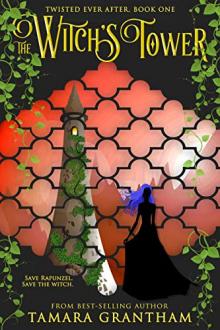Dreamthief by Tamara Grantham (easy readers .TXT) 📖

- Author: Tamara Grantham
- Performer: -
Book online «Dreamthief by Tamara Grantham (easy readers .TXT) 📖». Author Tamara Grantham

[Most recently updated: October 16, 2021]
on
The Art of War THE OLDEST MILITARY TREATISE IN THE WORLD Translated from the Chinese with Introduction and Critical Notes BY LIONEL GILES, M.A.
Assistant in the Department of Oriental Printed Books and MSS. in the British Museum
1910
To my brother
Captain Valentine Giles, R.G.
in the hope that
a work 2400 years old
may yet contain lessons worth consideration
by the soldier of today
this translation
is affectionately dedicated.
When Lionel Giles began his translation of Sun Tzŭ’s Art of War, the work was virtually unknown in Europe. Its introduction to Europe began in 1782 when a French Jesuit Father living in China, Joseph Amiot, acquired a copy of it, and translated it into French. It was not a good translation because, according to Dr. Giles, "[I]t contains a great deal that Sun Tzŭ did not write, and very little indeed of what he did."
The first translation into English was published in 1905 in Tokyo by Capt. E. F. Calthrop, R.F.A. However, this translation is, in the words of Dr. Giles, "excessively bad." He goes further in this criticism: "It is not merely a question of downright blunders, from which none can hope to be wholly exempt. Omissions were frequent; hard passages were willfully distorted or slurred over. Such offenses are less pardonable. They would not be tolerated in any edition of a Latin or Greek classic, and a similar standard of honesty ought to be insisted upon in translations from Chinese." In 1908 a new edition of Capt. Calthrop’s translation was published in London. It was an improvement on the first—omissions filled up and numerous mistakes corrected—but new errors were created in the process. Dr. Giles, in justifying his translation, wrote: "It was not undertaken out of any inflated estimate of my own powers; but I could not help feeling that Sun Tzŭ deserved a better fate than had befallen him, and I knew that, at any rate, I could hardly fail to improve on the work of my predecessors."
Clearly, Dr. Giles’ work established much of the groundwork for the work of later translators who published their own editions. Of the later editions of the Art of War I have examined; two feature Giles’ edited translation and notes, the other two present the same basic information from the ancient Chinese commentators found in the Giles edition. Of these four, Giles’ 1910 edition is the most scholarly and presents the reader an incredible amount of information concerning Sun Tzŭ’s text, much more than any other translation.
The Giles’ edition of the Art of War, as stated above, was a scholarly work. Dr. Giles was a leading sinologue at the time and an assistant in the Department of Oriental Printed Books and Manuscripts in the British Museum. Apparently he wanted to produce a definitive edition, superior to anything else that existed and perhaps something that would become a standard translation. It was the best translation available for 50 years. But apparently there was not much interest in Sun Tzŭ in English-speaking countries since it took the start of the Second World War to renew interest in his work. Several people published unsatisfactory English translations of Sun Tzŭ. In 1944, Dr. Giles’ translation was edited and published in the United States in a series of military science books. But it wasn’t until 1963 that a good English translation (by Samuel B. Griffith and still in print) was published that was an equal to Giles’ translation. While this translation is more lucid than Dr. Giles’ translation, it lacks his copious notes that make his so interesting.
Dr. Giles produced a work primarily intended for scholars of the Chinese civilization and language. It contains the Chinese text of Sun Tzŭ, the English translation, and voluminous notes along with numerous footnotes. Unfortunately, some of his notes and footnotes contain Chinese characters; some are completely Chinese. Thus, a conversion to a Latin alphabet etext was difficult. I did the conversion in complete ignorance of Chinese (except for what I learned while doing the conversion). Thus, I faced the difficult task of paraphrasing it while retaining as much of the important text as I could. Every paraphrase represents a loss; thus I did what I could to retain as much of the text as possible. Because the 1910 text contains a Chinese concordance, I was able to transliterate proper names, books, and the like at the risk of making the text more obscure. However, the text, on the whole, is quite satisfactory for the casual reader, a transformation made possible by conversion to an etext. However, I come away from this task with the feeling of loss because I know that someone with a background in Chinese can do a better job than I did; any such attempt would be welcomed.
Bob Sutton
The seventh volume of Mémoires concernant l’histoire, les sciences, les arts, les mœurs, les usages, &c., des Chinois is devoted to the Art of War, and contains, amongst other treatises, “Les Treize Articles de Sun-tse,” translated from the Chinese by a Jesuit Father, Joseph Amiot. Père Amiot appears to have enjoyed no small reputation as a sinologue in his day, and the field of his labours was certainly extensive. But his so-called translation of the Sun Tzŭ, if placed side by side with the original, is seen at once to be little better than an imposture. It contains a great deal that Sun Tzŭ did not write, and very little indeed of what he did. Here is a fair specimen, taken from the opening sentences of chapter 5:—
De l’habileté dans le gouvernement des Troupes. Sun-tse dit : Ayez les noms de tous les Officiers tant généraux que subalternes; inscrivez-les dans un catalogue à part, avec la note des talents & de la capacité de chacun d’eux, afin de pouvoir les employer avec avantage lorsque l’occasion en sera venue. Faites en sorte que tous ceux que vous devez commander soient persuadés que votre principale attention est de les préserver de tout dommage. Les troupes que vous ferez avancer contre l’ennemi doivent être comme des pierres que vous lanceriez contre des œufs. De vous à l’ennemi il ne doit y avoir d’autre différence que celle du fort au faible, du vide au plein. Attaquez à découvert, mais soyez vainqueur en secret. Voilà en peu de mots en quoi consiste l’habileté & toute la perfection même du gouvernement des troupes.
Throughout the nineteenth century, which saw a wonderful development in the study of Chinese literature, no translator ventured to tackle Sun Tzŭ, although his work was known to be highly valued in China as by far the oldest and best compendium of military science. It was not until the year 1905 that the first English translation, by Capt. E.F. Calthrop. R.F.A., appeared at Tokyo under the title “Sonshi”(the Japanese form of Sun Tzŭ). Unfortunately, it was evident that the translator’s knowledge of Chinese was far too scanty to fit him to grapple with the manifold difficulties of Sun Tzŭ. He himself plainly acknowledges that without the aid of two Japanese gentlemen “the accompanying translation would have been impossible.” We can only wonder, then, that with their help it should have been so excessively bad. It is not merely a question of downright blunders, from which none can hope to be wholly exempt. Omissions were frequent; hard passages were wilfully distorted or slurred over. Such offences are less pardonable. They would not be tolerated in any edition of a Greek or Latin classic, and a similar standard of honesty ought to be insisted upon in translations from Chinese.
From blemishes of this nature, at least, I believe that the present translation is free. It was not undertaken out of any inflated estimate of my own powers; but I could not help feeling that Sun Tzŭ deserved a better fate than had befallen him, and I knew that, at any rate, I could hardly fail to improve on the work of my predecessors. Towards the end of 1908, a new and revised edition of Capt. Calthrop’s translation was published in London, this time, however, without any allusion to his Japanese collaborators. My first three chapters were then already in the printer’s hands, so that the criticisms of Capt. Calthrop therein contained must be understood as referring to his earlier edition. This is on the whole an improvement on the other, thought there still remains much that cannot pass muster. Some of the grosser blunders have been rectified and lacunae filled up, but on the other hand a certain number of new mistakes appear. The very first sentence of the introduction is startlingly inaccurate; and later on, while mention is made of “an army of Japanese commentators” on Sun Tzŭ (who are these, by the way?), not a word is vouchsafed about the Chinese commentators, who nevertheless, I venture to assert, form a much more numerous and infinitely more important “army.”
A few special features of the present volume may now be noticed. In the first place, the text has been cut up into numbered paragraphs, both in order to facilitate cross-reference and for the convenience of students generally. The division follows broadly that of Sun Hsing-yen’s edition; but I have sometimes found it desirable to join two or more of his paragraphs into one. In quoting from other works, Chinese writers seldom give more than the bare title by way of reference, and the task of research is apt to be seriously hampered in consequence. With a view to obviating this difficulty so far as Sun Tzŭ is concerned, I have also appended a complete concordance of Chinese characters, following in this the admirable example of Legge, though an alphabetical arrangement has been preferred to the distribution under radicals which he adopted. Another feature borrowed from “The Chinese Classics” is the printing of text, translation and notes on the same page; the notes, however, are inserted, according to the Chinese method, immediately after the passages to which they refer. From the mass of native commentary my aim has been to extract the cream only, adding the Chinese text here and there when it seemed to present points of literary interest. Though constituting in itself an important branch of Chinese literature, very little commentary of this kind has hitherto been made directly accessible by translation.
I may say





Comments (0)